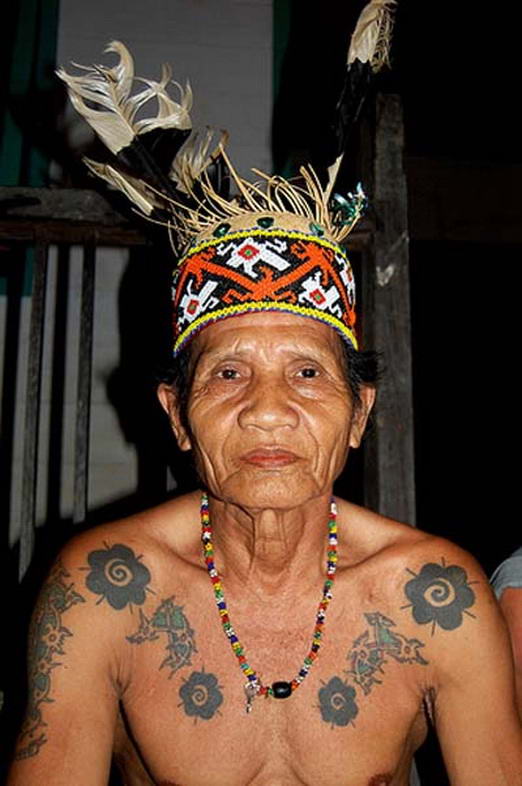Banjarmasin Floating Market: A Note Heritage
Banjarmasin is one of the major cities in Indonesia are located in one of the largest island in the world which is Borneo. Banjarmasin in South Kalimantan province, as quoted from Banjarmasin local government websites, has an area of approximately 72 square miles or approximately 0.22 percent of the total area of South Kalimantan.
Cleaved by the river Martapura provide its own characteristics on the way people lives, especially they use rivers as water transport, trade and tourism. Banjarmasin sebagai ibukota propinsi adalah pusat perdagangan dan pariwisata. As the provincial capital ,Banjarmasin is the trade and tourism center.
Banjarmasin also called the water city because the location of mainland is a few inches below the sea surface. and The most famous unique places in Banjarmasin is the floating market.The presence of the floating market itself is part of from the historical city of Banjarmasin.
As quoted from the blog gitacinta.multiply.com, in the year 1526 Sultan Suriansyah establish the kingdom on the edge of the Kuin and Barito river which later became the forerunner of the Banjarmasin.
On the banks of the river is also a traditional trading center began to grow. Besides Muara Kuin floating market in Banjarmasin, other floating markets are in the Lok Baintan above Martapura River. But the buoyant market here is not as popular as the Muara Kuin Banjarmasin possibly because the location is quite far from downtown.
To be able to enjoy the exoticism of the floating market, we can rent a motor boat called Kelotok boat.
The price to rent a Kelotok ranged from Rp 50,000 to Rp 70.000 (US $ 6 - 9) depends on the number of passengers. A Trip from downtown to Banjarmasin Kuin floating market takes about one hour by kelotok boat, whereas with the land transport only takes about 15 minutes.
By boat we can see cultural kelotok Banjar people who sell vegetables, cakes, food and drink typical of Banjarmasin, like Soto Banjar can be enjoyed from a boat (if not using kelotok) or can transact directly from boat to boat.Floating market is held every day from 5 until 8 am.
Read More
Banjarmasin is one of the major cities in Indonesia are located in one of the largest island in the world which is Borneo. Banjarmasin in South Kalimantan province, as quoted from Banjarmasin local government websites, has an area of approximately 72 square miles or approximately 0.22 percent of the total area of South Kalimantan.
Cleaved by the river Martapura provide its own characteristics on the way people lives, especially they use rivers as water transport, trade and tourism. Banjarmasin sebagai ibukota propinsi adalah pusat perdagangan dan pariwisata. As the provincial capital ,Banjarmasin is the trade and tourism center.
Banjarmasin also called the water city because the location of mainland is a few inches below the sea surface. and The most famous unique places in Banjarmasin is the floating market.The presence of the floating market itself is part of from the historical city of Banjarmasin.
As quoted from the blog gitacinta.multiply.com, in the year 1526 Sultan Suriansyah establish the kingdom on the edge of the Kuin and Barito river which later became the forerunner of the Banjarmasin.
On the banks of the river is also a traditional trading center began to grow. Besides Muara Kuin floating market in Banjarmasin, other floating markets are in the Lok Baintan above Martapura River. But the buoyant market here is not as popular as the Muara Kuin Banjarmasin possibly because the location is quite far from downtown.
To be able to enjoy the exoticism of the floating market, we can rent a motor boat called Kelotok boat.
The price to rent a Kelotok ranged from Rp 50,000 to Rp 70.000 (US $ 6 - 9) depends on the number of passengers. A Trip from downtown to Banjarmasin Kuin floating market takes about one hour by kelotok boat, whereas with the land transport only takes about 15 minutes.
By boat we can see cultural kelotok Banjar people who sell vegetables, cakes, food and drink typical of Banjarmasin, like Soto Banjar can be enjoyed from a boat (if not using kelotok) or can transact directly from boat to boat.Floating market is held every day from 5 until 8 am.






























































